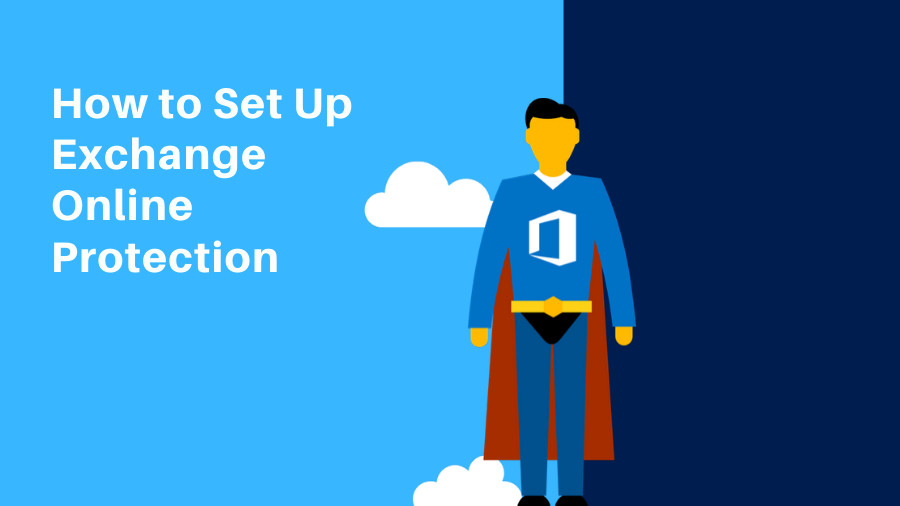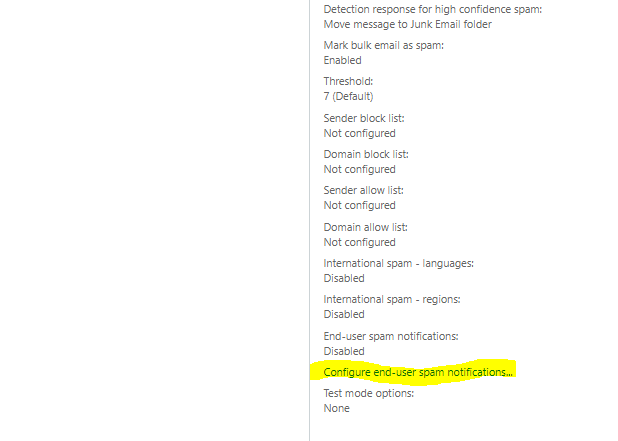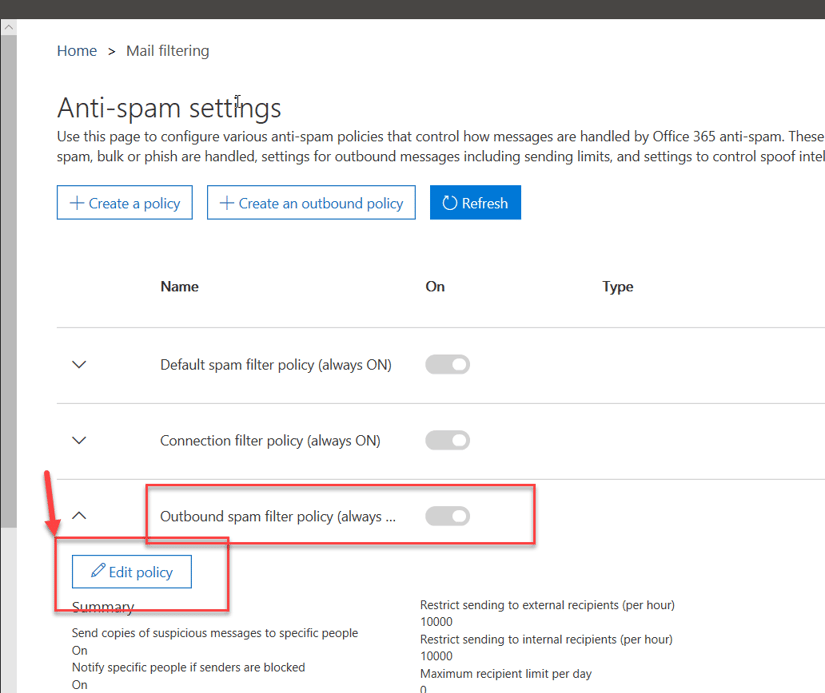
In this blog post, we're going to walk you through the step-by-step process for setting up Exchange Online Protection (EOP). Although setting up Exchange Online Protection is important, it is only one portion of a comprehensive email security strategy. This blog is the 2nd post of a 5 post series titled Your Complete Guide to Microsoft Email Security. The 5 steps to email security are:
- Configure DKIM, DMARC, SPF
- Deploy EOP (Exchange Online Protection) - this post
- Set up Office Message Encryption
- Enable Office 365 ATP (Advanced Threat Protection)
- Enable Office 365 MFA with Authenticator App

Part 1 - Exchange Online Protection Anti-Spam
- Go to https://protection.office.com/
- Click on Anti-Spam
- Make sure that standard settings is turned on
- Go to Exchange Admin Center
- Click on Protection
- Click on Spam Filter

- Click on Configure end-user spam notification
- Click on Enable end-user spam notification
- Leave the Send end-user spam notifications every (days) to 3
- Click Save
You are done with setting up Anti-spam!
Microsoft Exchange Online Protection - Anti-malware
- Click on Anti-malware
- Click on Default
- A popup window will open
- Click on Settings

I would advise the following:
- Under Malware Detection Response, select Yes and use custom notification text.
- In the text box, you could type something like "Malware Alert! We have found malware in this message attachment and the message has been quarantined. Please contact your administrator, John Doe, at johndoe@microsoft.com for more details"
- Under Common Attachment Types Filter, select On - Emails with attachments of filtered file types will trigger the Malware Detection Response (recommended).
- Under Notifications, select Notify internal senders and Notify external senders
- Under Administrator Notifications, select Notify administrator about undelivered messages from internal senders and Notify administrator about undelivered messages from external senders
- Add the administrator email address that should receive the notification
- Click Save
Set Outbound Spam Notifications
First, you will need to create a new contact within Office 365 in order to have someone receive notifications, or at least apply this rule to the current Global Admin.
- Go to Admin Center
- Select Users
- Select Contacts
- Click add a contact
- enter contact info (this example uses BEMO, but this would be your IT contact or Global Admin)

- Click save
- Select Groups
- Click on Groups
- Click on add a group
- Under Type, select Distribution List
- Under Name, type "Company Name" IT Team
- Click Add
- Click Close
- Select Groups
- Click on Groups
- Within the 'View' drop down list, select Distribution list
- Add an Owner (add your Global Admin of the company as the Owner of the Distribution Group)
- Click close
- Go to Exchange Admin Center
- Open Protection
- Go to https://protection.office.com/antispam
- Expand the Outbound spam policy and click on Edit Policy

- Under Notifications, check mark the two options "
- Send a copy of suspicious outbound email messages to specific people." and "
- Notify specific people if a sender is blocked due to sending outbound spam." and click on Add People.
- Enter the email you want the notification to go to
- Open the default policy (or any other policy)
- Select Outbound spam preferences
- Check mark the Send a notification to the following email address or addresses when a sender is blocked for sending outbound spam check box
Now if any of your mailboxes are sending out spam you will know about it!
Not looking to do this yourself?
Schedule a meeting with us to learn more about implementing Exchange Online Protection and all the other email security tools offered by Microsoft.
Top 10 Posts
-
Windows 10 Pro vs Enterprise
-
Migrate From Gmail to Office 365: Step-By-Step Guide
-
Windows 10 Enterprise E3 vs E5: What's the Difference?
-
What are the 4 types of Microsoft Active Directory?
-
How to Migrate from GoDaddy to Office 365
-
Google Workspace to Office 365 Migration: A Step-by-Step Guide
-
How to Set Up Office 365 Advanced Threat Protection
-
10 Benefits of Microsoft Teams
-
Top 3 Reasons to Move From Google Drive to Microsoft OneDrive
-
How to remove Office 365 from GoDaddy (tips and tricks)
-2.png?width=1080&height=1080&name=Untitled%20design%20(5)-2.png)



Leave us a comment!